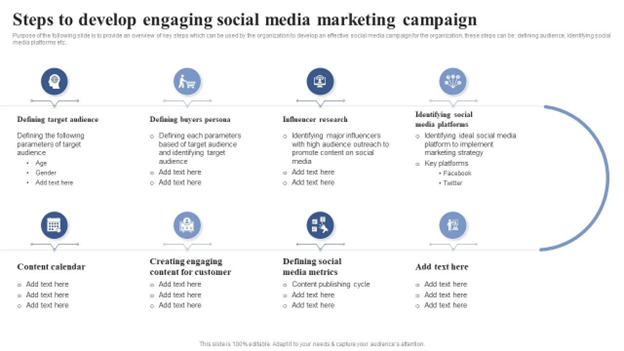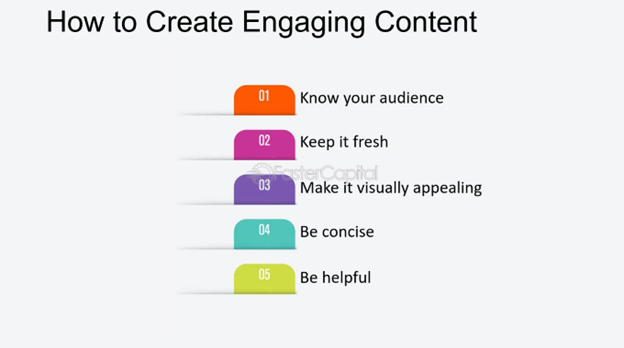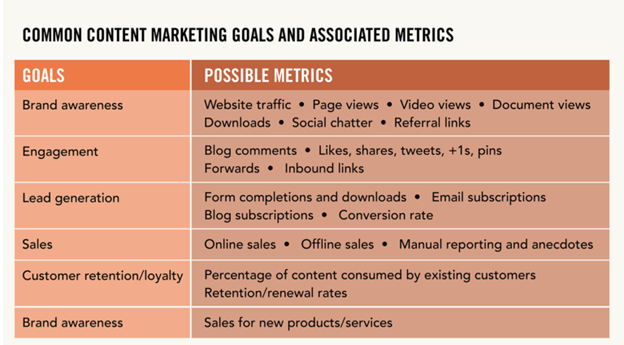SHARE

Social media has become an integral part of our lives in today’s digital landscape. Connecting with friends and family to stay updated with the latest news and trends has revolutionised how we communicate and consume information. As a result, brands and businesses have also recognised its power and potential as a marketing tool. But with millions of posts published daily, how can you ensure your content stands out and gets shared? The answer lies in creating engaging content that captures your audience’s attention and sparks their interest.
[thrive_leads id=’8342′]
Understanding the Importance of Engaging Content
Social media platforms have become crowded, and users are bombarded with numerous posts and advertisements. In such a competitive environment, it is crucial to create content that grabs their attention and resonates with them on a deeper level. The more engaged your audience is, the more likely they are to share your content with their networks, expanding your brand’s reach and visibility.
The Role of Social Media in Today’s Digital Landscape
Social media has completely transformed the way we communicate and interact with others. It has become a platform where users can express their thoughts, engage in conversations, and share content with their connections. With billions of active users across various platforms, social media has become a powerful force that shapes opinions, influences purchasing decisions, and connects people across the globe.
Why Engagement Matters in Content Creation
Engagement is more than just likes, shares, and comments. It indicates that your content resonates with your audience and fosters a connection. Engaging content not only captures attention but also encourages interaction and conversation. When your audience feels compelled to engage with your content, it establishes a sense of trust and loyalty, making them more likely to become advocates for your brand.

(Source: Steps to develop engaging social media marketing positioning brand with effective content and social media. (2023, March 15). https://www.slideteam.net/steps-to-develop-engaging-social-media-marketing-positioning-brand-with-effective-content-and-social-media.html )
Defining Engaging Content for Social Media
Engaging content is more than just eye-catching visuals or catchy captions. It embodies a combination of factors that make your audience want to stop scrolling and pay attention to what you have to say. It is about providing value, triggering emotions, and leaving a lasting impression on your audience’s minds. Let’s explore some key characteristics of engaging content:
Characteristics of Engaging Content
- Relevance: Engaging content is tailored to the interests and needs of your target audience. It speaks directly to their pain points, desires, or aspirations, making it more relatable and meaningful to them.
- Authenticity: Authentic content is genuine, honest, and transparent. It resonates with your audience on a personal level, generating trust and credibility.
- Visual Appeal: Compelling visuals, such as high-quality images or videos, can instantly capture attention and evoke emotions in your audience.
- Storytelling: stories have a unique power to captivate and connect with people. Engaging content often utilises storytelling techniques to create a narrative that resonates with the audience.
Differentiating between Content types: Informative, Entertaining, and Inspiring
Engaging content can take various forms, depending on your brand’s goals and the preferences of your target audience. Here are three common types of engaging content:
- Informative Content: This type of content provides valuable information, insights, or tips that educate your audience and solve their problems. It positions your brand as an authority in your industry and helps build trust.
- Entertaining Content:Entertaining content aims to amuse, entertain, or uplift your audience. It can be in the form of funny videos, memes, or interesting stories that bring a smile to their faces and make them want to share it with others.
- Inspiring Content: Inspiring content seeks to motivate and inspire your audience. It can be in the form of success stories, quotes, or thought-provoking messages that resonate with their aspirations and instigate positive action.
 (Source: How To Create Engaging Content (nd). https://fastercapital.com/questions/How-to-Create-Engaging-Content.html)
(Source: How To Create Engaging Content (nd). https://fastercapital.com/questions/How-to-Create-Engaging-Content.html)
The Process of Creating Engaging Content
Creating engaging content requires a strategic approach that involves understanding your audience, defining your brand’s voice, and planning ahead. Let’s walk through the key steps in the process:
Identifying your Target Audience
Before diving into creating content, it is essential to know who your audience is. Understanding their demographics, preferences, and pain points can help you tailor your content to meet their specific needs and interests. Conducting market research, analysing data, and creating buyer personas can provide valuable insights into your audience’s behaviours and motivations.
Crafting Your Brand’s Voice and Message
Your brand’s voice is the personality and tone that represents your brand in all communication. It sets your brand apart, making it recognisable and relatable to your audience. Define your brand’s voice by considering factors such as your brand’s values, target audience, and industry. Once you have established your brand’s voice, craft a clear and consistent message that aligns with your brand’s identity and resonates with your audience.
The Importance of a Content Calendar
A content calendar is a strategic tool that helps you plan and organise your content creation efforts. It allows you to schedule content in advance, ensure a consistent flow of content, and align your content with key events or promotions. By setting goals, brainstorming ideas, and mapping out your content in a calendar, you can maintain a consistent presence on social media and stay ahead of your content creation process. Moreover, a content calendar allows you to track the performance of your content and make data-driven decisions to optimise your strategy.
Utilising Social Media Platforms Effectively
Each social media platform has its own unique features, user demographics, and engagement patterns. To maximise the impact of your content, it is essential to tailor your approach to each platform accordingly. Here are a few strategies to consider:
Tailoring Content For Different Social Media Platforms
Understand each social media platform’s specific audience, content format, and engagement style. This will help you create content that aligns with the platform’s best practices and engages your target audience effectively. For example, Instagram is highly visual, making it ideal for sharing images and videos, while Twitter demands concise, conversation-driven content.
Best Times To Post on Various Platforms
The timing of your social media posts can significantly impact their visibility and engagement. Each platform has its own peak usage hours and days. Analyse your audience’s online behaviour, experiment with different posting times, and track the performance data to determine the optimal times to post your content for maximum reach and impact.
 (Source: FutureLearn. (2022, October 25). Updates, Insights, and News from FutureLearn | Online Learning for You. FutureLearn. https://www.futurelearn.com/info/courses/introduction-to-content-marketing-strategy/0/steps/160611 )
(Source: FutureLearn. (2022, October 25). Updates, Insights, and News from FutureLearn | Online Learning for You. FutureLearn. https://www.futurelearn.com/info/courses/introduction-to-content-marketing-strategy/0/steps/160611 )
Measuring the Success of Your Content
Creating engaging content is only half the battle; measuring its impact is equally important. By tracking key metrics and analysing the data, you can gain valuable insights into the performance of your content and make informed decisions to optimise your strategy. Here are some key metrics to track:
Key Metrics To Track Engagement
- Reach: The number of unique users who have seen your content.
- Engagement Rate: The percentage of your audience who have actively engaged with your content through likes, shares, comments, or clicks.
- Click-Through Rate (CTR): The percentage of users who clicked on a link or CTA in your content.
- Conversion Rate: The percentage of users who completed a desired action, such as making a purchase or signing up for a newsletter.
Adjusting Your Strategy Based on Analytics
Regularly analysing your content’s data and performance metrics can provide valuable insights into what is working and what needs improvement. Use this information to tweak your strategy, experiment with different content formats, and optimise your campaigns for better results. Remember, social media trends and preferences can evolve, so staying agile and adapting your content strategy is essential to stay ahead of the curve.
In conclusion, creating engaging content for social media requires a deep understanding of your audience, a well-defined brand voice, and a strategic approach. By incorporating various content types, leveraging relevant platforms, and constantly evaluating your performance, you can create content that captures attention, sparks conversations, and ultimately gets shared. So get creative and inspire your audience with content that will leave a lasting impression.
[thrive_leads id=’8445′]
Frequently Asked Questions About Content Creation For Social Media
What Type of Content Is Best For Social Media?
Visuals are key to creating engaging social media content. Use high-quality images, videos, or graphics that align with your brand’s visual identity and messaging.
What Is the Content of Your Social Media Site?
Social media content is pretty much anything you share on social media, whether it’s a text update, a photo, a graphic, a video, a link, etc.
How Do You Create Value Content For Social Media?
- Identify and set goals
- Research your audience
- Analyse your competitors
- Audit your current social content
- Choose your content types
- Build a content calendar
- Promote and distribute your content
- Measure results
What Is the Most Engaging Content?
Videos have become increasingly popular as a highly engaging content format. They allow you to convey information in a dynamic and visually stimulating manner. From tutorials and product demonstrations to storytelling and behind-the-scenes footage, videos can captivate your audience and evoke emotions.
Why Is Social Media Content Creation Important?
It allows you to cement your position as a go-to destination for your customers, whether it be for entertainment, education, or inspiration. Effective content will help you build long-term relationships with your audience, increasing your organisation’s revenue.





